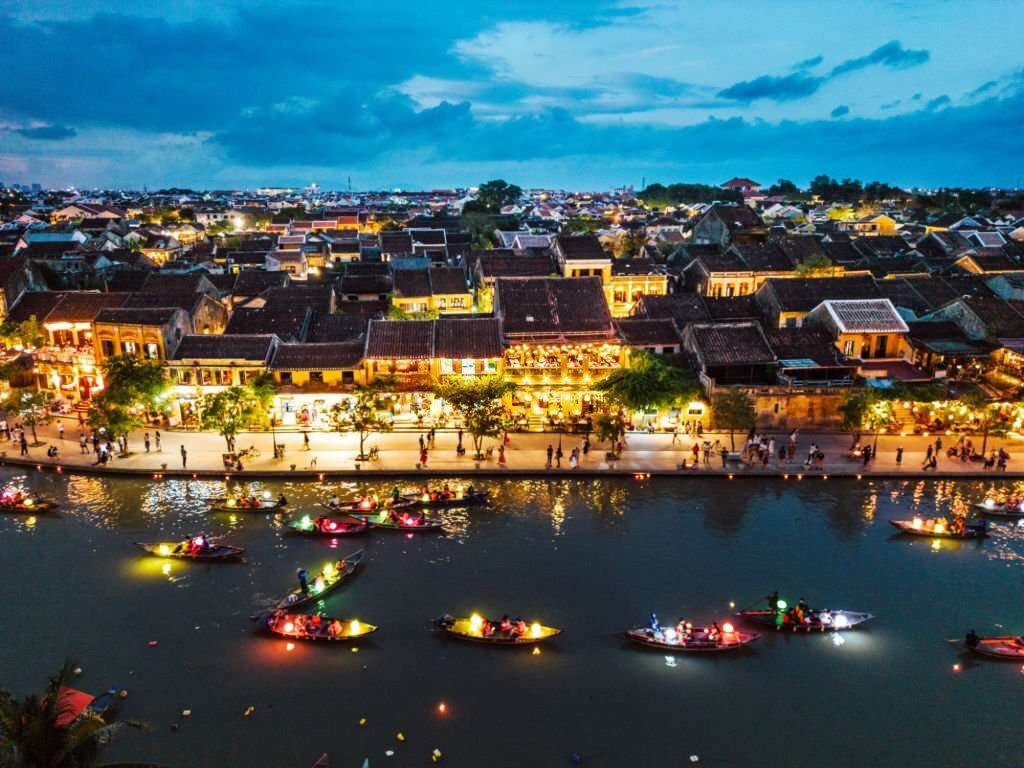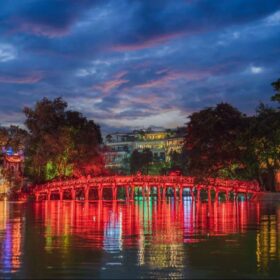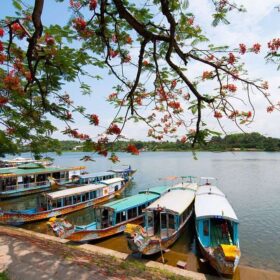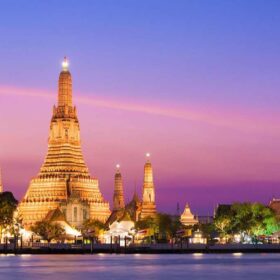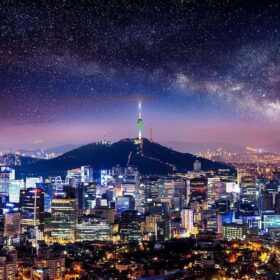Hoi An, situated along Vietnam’s central coast just south of Da Nang, is renowned for its picturesque Old Town, which boasts hundreds of well-preserved historic buildings. However, this charming city has much more to offer, including a vibrant food scene, stunning beaches, and captivating day trip destinations.
Nestled beside the Thu Bon River, with canals leading to the East Vietnam Sea, Hoi An flourished as a prominent trading port in Southeast Asia for centuries. Consequently, it showcases a rich tapestry of cultural influences, with Chinese temples and French colonial structures standing alongside elegant Japanese bridges and traditional Vietnamese family residences.
In addition to savoring the city’s delightful ambiance, exploring its tourist attractions, and indulging in its culinary delights, there are numerous activities to be enjoyed in the scenic countryside and the enticing Cham Islands, all within easy reach of Hoi An.
Hoi An Ancient Town
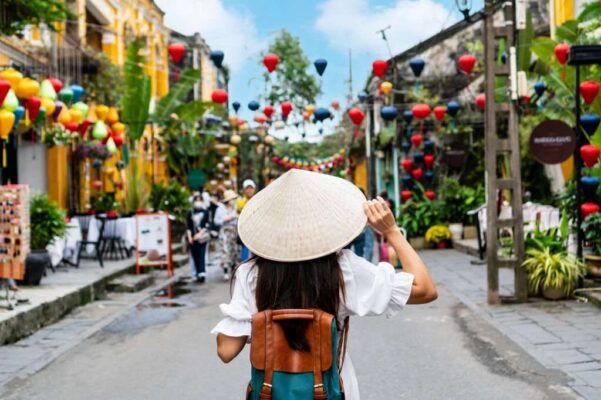
The entire historic center of Hoi An has received the prestigious designation of being a UNESCO World Heritage Site. This area is a vibrant fusion of diverse cultures, architectural styles, and historical landmarks, representing one of Southeast Asia’s most bustling ancient trading ports.
Spanning over 30 hectares, this well-preserved historic center is composed of 1,107 timber-framed structures, encompassing an array of religious edifices, monuments, and family residences. Along the charming pedestrian streets, you’ll find rows of exquisite wooden and brick houses dating from the 15th to the 18th century. The iconic covered Japanese bridge is also an integral part of this remarkable site.
Strolling through Hoi An’s ancient streets feels like a journey through time, as evident Chinese and Japanese influences permeate the surroundings. You’ll notice gilded red Chinese characters adorning rooftops and pagoda-style structures gracefully lining the canal’s edge.
Within the Ancient Town, you’ll discover a plethora of dining and shopping opportunities, as well as numerous spots to savor the enchanting sunset casting its warm glow over the historic buildings.
Japanese Covered Bridge
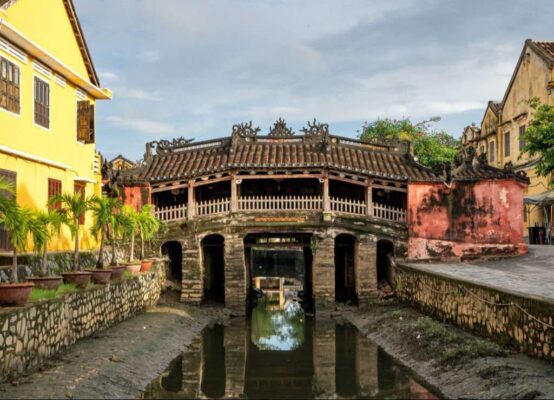
The Japanese Covered Bridge, also referred to as the Cau Chua Pagoda, stands as one of the most frequented landmarks in the city. This bridge was constructed during the 17th century to connect Tran Phu Street to Nguyen Thi Minh Khai Street.
This architectural marvel facilitated access from the Japanese quarter of Hoi An to the Chinese neighborhoods. Adorned with a covering and designed in the likeness of a Japanese pagoda, the bridge has retained its original style meticulously for four centuries.
While the covered bridge serves a practical purpose by providing shelter to those crossing from the elements, it also boasts intricate decorations featuring depictions of various animals.
An Bang Beach

Hoi An’s An Bang Beach stands as one of the most bustling beaches in all of Vietnam. If you’re seeking a place to unwind, relax, and bask in the sun after all the sightseeing and active outdoor pursuits, then An Bang Beach should be your destination. Situated just a ten-minute drive north of the city center, this beach boasts pristine white sands adorned with deckchairs and palapas, accompanied by cafes and restaurants scattered along the shoreline.
Facing the glistening East Vietnam Sea with a view of the distant Cham Islands, the expansive sands span over four kilometers. Due to recent erosion at the nearby Cua Dai Beach, An Bang has become an increasingly popular destination, prompting the emergence of numerous hotels, guesthouses, and eateries in recent years.
Under the shade of palm trees, countless vendors are lined up to cater to the culinary needs of beachgoers throughout the day.
Fujian Assembly Hall
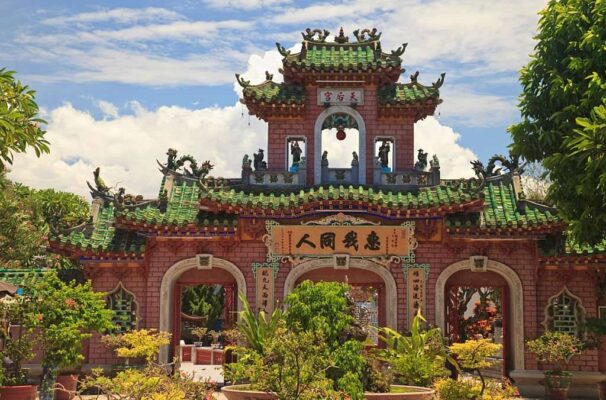
Phuc Kien, also known as the Fujian Assembly Hall, shares its common name with other assembly halls in the city. These assembly halls initially served as gathering places for residents, traders, and visitors from a specific region in China known as Fujian.
Over time, the assembly hall underwent a transformation into a religious site dedicated to honoring the deity Thien Hau. A visit to the Fujian Assembly Hall allows you to admire the vibrant fountains in the courtyard, the intricately designed gates surrounding the premises, and the exquisitely carved dragon motifs in the main chamber.
The Fujian Assembly Hall continues to be a popular destination among both visitors and residents of Fujian heritage and ancestry.
Hoi An Museum
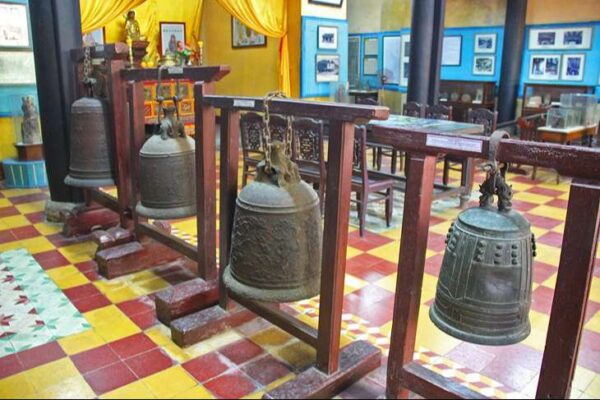
Also known as the Museum of History and Culture, this modest and unassuming attraction shares its location with the Quan Yin Pagoda. Originally constructed in the 1600s in honor of the Goddess of Mercy, Guan Yin, the temple’s enduring beauty shines through, despite the gradual erosion of details over centuries.
Both the temple and the museum are well worth a visit to gain a deeper insight into Hoi An’s history and the significant historical and religious events that have left their mark on the city over a span of 2,000 years.
The museum’s collection is organized into four sections, encompassing the history of Hoi An as a bustling trading port, its experiences during the Vietnam War, its rejuvenation, and development into modern times. The final section focuses on art portraying life in Hoi An throughout the ages.
The assortment of objects on display may appear somewhat eclectic, with bells displayed alongside ceramics, Cham sculptures, and maritime artifacts. Fortunately, there is ample information provided in English to help visitors understand the significance of these items. Furthermore, the museum’s top floor offers a refreshing open view of the old town.
Get a Tailormade Suit
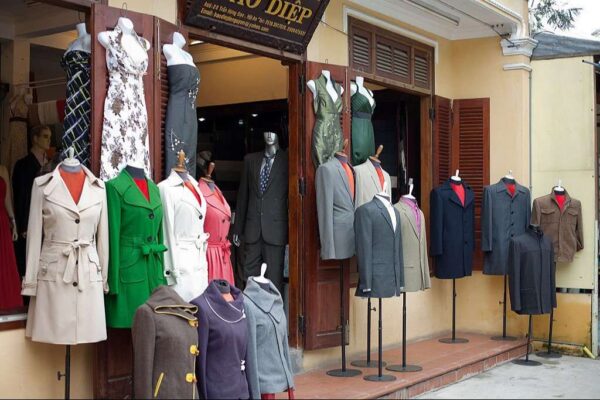
Hoi An abounds with tailors, a tradition stemming from its history as a bustling trading port on the Silk Route. Consequently, having custom clothing made is one of the most popular activities in Hoi An.
In a genuine tailor’s shop in Hoi An, you can peruse an extensive array of fabrics, select your preferred colors, and undergo measurements. In as little as the following day, you’ll have the opportunity to collect your fully tailored suit or dress, or you can return for a second fitting to ensure the perfect fit. Don’t hesitate to negotiate the deposit, with the full payment due only upon the completion of the tailoring or garment.
Tan Ky Old House
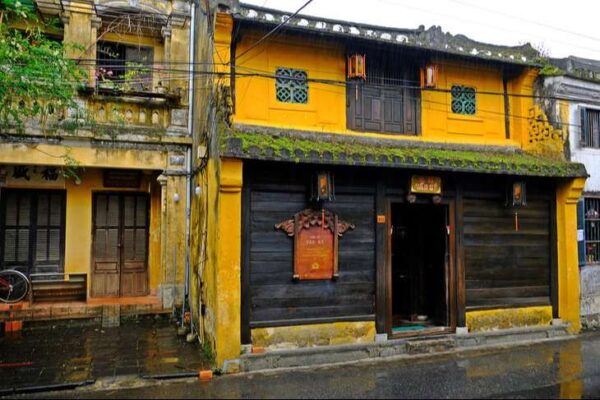
Another of Hoi An’s unique attractions that blurs the line between residence and museum is the Tan Ky Old House. This residence boasts a history spanning over 200 years, having been passed down through seven generations of the same Vietnamese family.
The house is architecturally captivating, and during your visit, you can appreciate intricate features such as the pulleys used to raise furniture to prevent flooding and the exquisite carved wooden balcony. What adds a particularly intriguing dimension to the experience is that family members still inhabit the Tan Ky Old House, breathing life into the property’s rich history.
Cua Dai Beach
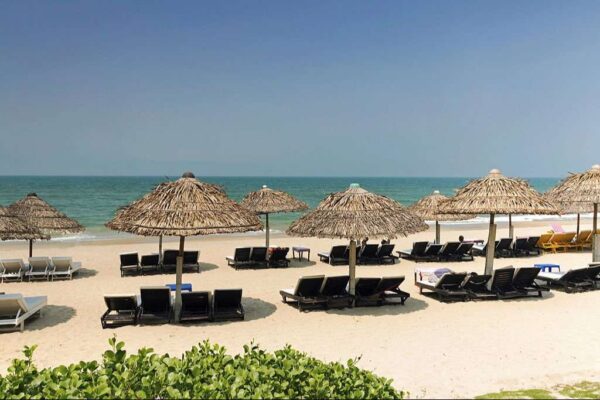
Cua Dai stands out as one of the most popular and vibrant beaches in the Hoi An region, with its white sands gently sloping into the turquoise waters. Situated just five kilometers from town, Cua Dai boasts gentle, inviting waves, making it ideal for swimming.
While it may not offer an array of water sports, visitors can rent sun loungers, dine at seaside restaurants, or purchase cold drinks and souvenirs from the many vendors strolling along the beach.
Even during the peak season (from April to August), the beach remains relatively uncrowded on weekdays. If you arrive early in the morning, you’ll likely find it shared with just a few long-tail fishing boats heading out to sea. The palm-fringed coastline provides ample shaded areas if you visit during the hotter part of the day.
Since a tsunami struck the coast in 2004, the beach has been contending with erosion, so you might come across machinery and workers at certain sections of the beach throughout the year. Keep in mind that their presence is aimed at preserving the beach’s beauty, so you can easily find another spot to bask in the sun and enjoy the sea.
Phung Hung Old House
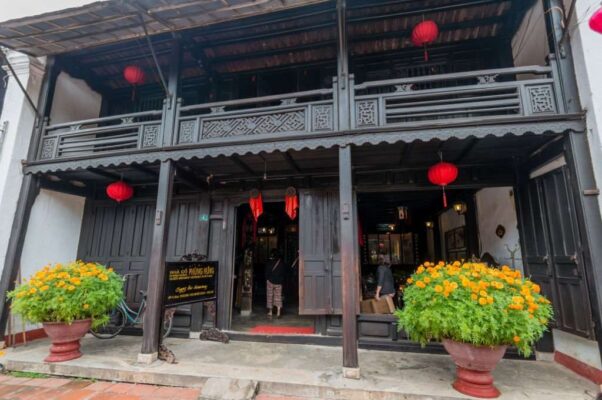
Arguably the most renowned structure in Hoi An, the Phung Hung Old House boasts a history spanning over two centuries. Initially serving as a merchant’s residence for a family engaged in the trade of spices, silk, and chinaware, this house is characterized by its vibrant hanging lanterns, rich red and brown hues, a roof with Japanese influences, and vivid wall hangings adorned with Chinese inscriptions.
The architectural ingenuity of the house is noteworthy, as its 80 columns, crucial for its support, rest upon a distinctive lotus-shaped base designed to shield them from moisture and termite damage. Notably, the rear section of the house, complete with a balcony overlooking the canal for convenient unloading of goods arriving by boat, can be securely sealed during floods to safeguard the rest of the structure from water damage.
Although the shop that once occupied the ground floor of the house has disappeared, remnants of its presence can still be found throughout the space. From the handicrafts adorning tables and windows to the altar honoring the owner’s ancestors and the Yin/Yang tiles adorning the house, these details provide a glimpse into its commercial past.
Tra Que Vegetable Village
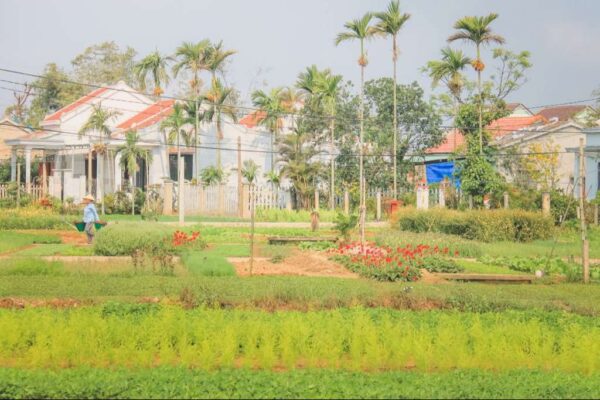
Passionate food enthusiasts can take their culinary exploration to the next level with a visit to the serene Tra Que Vegetable Village, located just north of town en route to An Bang Beach. This tranquil and charming locale is renowned for its fertile farms and lush fields, providing a steady supply of fresh vegetables to Hoi An and the surrounding areas.
Named after the fragrant herbs that enhance local dishes daily, this quaint village features picturesque green vegetable plots that stretch as far as the eye can see. In addition to capturing scenic photographs of the endless fields, visitors have the opportunity to observe farmers tending to the soil, planting seeds, and harvesting their crops.
For a more immersive experience, guests can participate in planting vegetables themselves and savor the flavors through cooking classes and guided tours offered in this laid-back village.
Trip to My Son
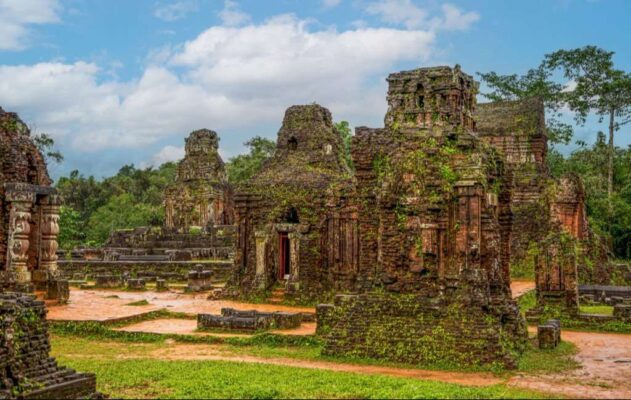
Another memorable excursion to consider when visiting Hoi An is a visit to the impressive and extensive archaeological ruins of Mỹ Sơn. Situated an hour’s drive southwest of the city center, this sprawling site boasts weathered ancient religious structures adorned with intricate carvings.
As one of Southeast Asia’s longest-inhabited archaeological sites, these Hindu temples were constructed by the Champa Kings between the 4th and 14th centuries. Often likened to other complexes such as Angkor Wat in Cambodia and Bagan in Myanmar, this broad valley contains approximately seventy temples and tombs.
Strolling is an awe-inspiring experience. Elaborate inscriptions and statues emerge from the encroaching vegetation that threatens to engulf these ancient structures. While some temples remain well-preserved, much of the site sadly endured significant damage during the American War.
Quan Cong Temple
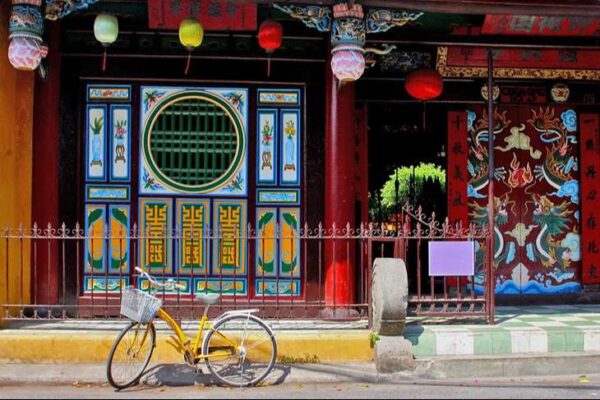
One of the most significant places of worship in the city, the vibrant Quan Cong Temple is located in the heart of Hoi An’s enchanting Old Town. Renowned for its magnificent art and architecture, the temple boasts an intricate facade, exquisite frescoes, and a host of other traditional Chinese elements to admire.
Constructed in 1653, this well-preserved temple is dedicated to Quan Van Truong, a renowned Chinese general celebrated for his loyalty, integrity, sincerity, and commitment to justice. These qualities held great importance in a coastal city with a thriving port, where merchants depended on trust.
Beyond its striking red, yellow, and green entrance gate, visitors can explore the temple grounds adorned with statues and pay their respects in the sacred interior filled with the aroma of incense. In addition to capturing photographs of its charming dragon motifs and grand main altar, guests can also admire a splendid ancient statue of the revered general himself.
Thanh Ha Pottery Village
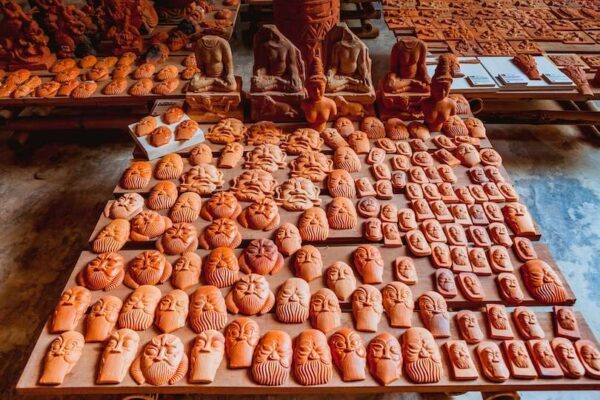
One of Vietnam’s most ancient pottery villages, the traditional Thanh Ha is situated just a fifteen-minute drive down the Thu Bon River from the city center. Here, you can observe master craftsmen at work and acquire exquisite pottery, sculptures, and other ceramic items as mementos of your travels around the country.
Still housing numerous pottery workshops and small, family-operated ceramics enterprises, this peaceful village was established in the sixteenth century. While strolling through its quaint historic streets, you can witness skilled artisans firing up their kilns and crafting remarkable artworks using age-old techniques.
In addition to appreciating the talented potters as they mold the clay and create beautiful pieces, you can also try your hand at pottery as classes are regularly conducted. Afterward, be sure to visit Thanh Ha Terracotta Park, where you can explore intriguing exhibits on this art form and view remarkable replicas of famous landmarks such as the Arc du Triomphe and the Colosseum.
Museum of Trading Ceramics
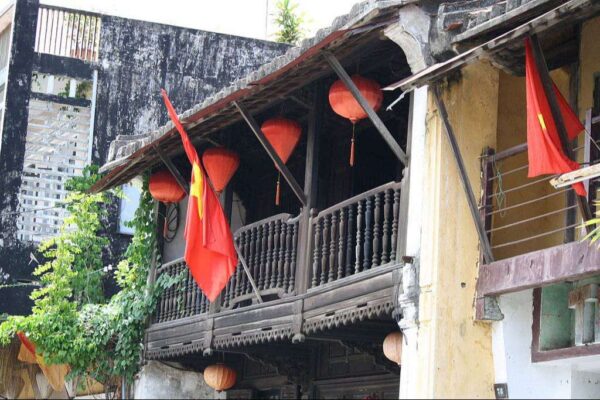
Situated within a beautifully restored wooden residence, the Museum of Trading Ceramics is renowned for its extensive collection of artifacts sourced from various corners of the globe.
Among these items are pieces that trace their origins back to Egypt, providing visitors with insights into the historical trade activities that once thrived in Hoi An.
Additionally, the museum features an exhibition that delves into the restoration of ancient buildings in Hoi An, making it an ideal destination for those with a keen interest in traditional Vietnamese architecture.
Hoi An Silk Village
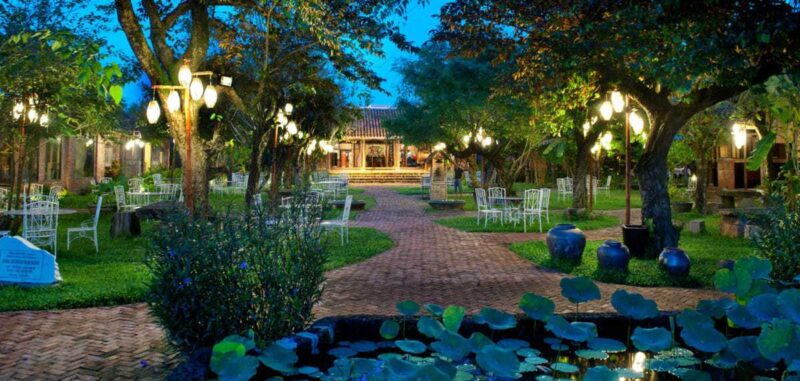
Hoi An Silk Village is the ideal destination for those looking to escape the city and explore the ancient weaving techniques that have made this region of Vietnam famous.
Located in Quang Nam Province, just around one kilometer from the city center, the village presents a charming setting with homes constructed in the traditional style.
Within the village, skilled artisans are on hand to guide you through the process of creating exquisite silk items, and you can even participate in feeding the silkworms and assisting with the unraveling of their cocoons.
Furthermore, the village offers an excellent opportunity to purchase traditional silk pieces, making for delightful gifts and souvenirs.
Read More: Top Tourist Attractions in Vietnam
Accommodation: Where to Stay in Hoi An: Best Areas & Hotels
FAQs
Q: Is Hoi An suitable for solo travelers?
A: Absolutely! Hoi An is a safe and welcoming destination for solo travelers, offering plenty of activities and opportunities to meet fellow travelers.
Q: When is the best time to visit Hoi An?
A: The best time to visit Hoi An is during the dry season, from February to August, when the weather is pleasant for outdoor activities.
Q: How can I get to Hoi An from Da Nang?
A: You can easily reach Hoi An from Da Nang by taxi, shuttle bus, or motorbike. The journey takes approximately 30 minutes.
Q: Are credit cards widely accepted in Hoi An?
A: While some upscale establishments accept credit cards, it’s advisable to carry cash for small purchases and in local markets.
Q: Can I extend my visa in Hoi An?
A: Yes, you can extend your visa in Hoi An through the local immigration office or seek assistance from a travel agency for the process.

